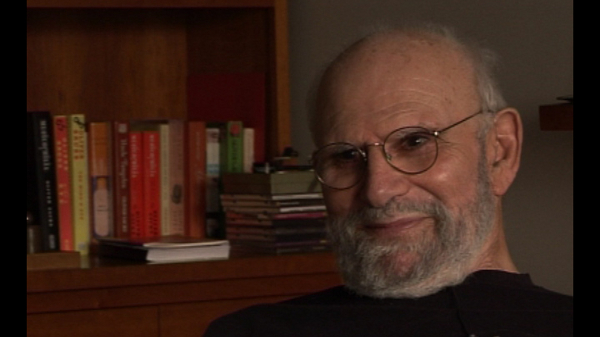NEXT STORY

'Arnold Friedman took a shine to me'
RELATED STORIES

NEXT STORY

'Arnold Friedman took a shine to me'
RELATED STORIES


|
Views | Duration | |
|---|---|---|---|
| 111. Jim Hamilton: My great friend | 384 | 01:13 | |
| 112. The beginning of my interest in neurology and case histories | 322 | 01:51 | |
| 113. Sleeping on fungus in the Central Valley | 289 | 01:30 | |
| 114. Working to fund my travelling around the USA | 287 | 00:31 | |
| 115. Work with Feinstein and Levin on Parkinson's disease | 292 | 01:24 | |
| 116. Announcing myself to the world of neurology | 299 | 02:26 | |
| 117. My first real interactions with patients | 303 | 02:19 | |
| 118. 'Arnold Friedman took a shine to me' | 288 | 00:36 | |
| 119. Arnold Friedman's strange turn | 411 | 02:41 | |
| 120. The final writing of Migraine | 385 | 06:00 |


This... this exhibit of mine showed the neuropathology of axonal dystrophy and I... when I came to New York I... I did a... I had a fellowship in both neuropathology and neurochemistry, but that, as I mentioned yesterday, was a disaster. And it was a huge relief to me, in '66, when I could start seeing real patients, namely the migraine patients in a clinic and the patients at Beth Abraham Hospital, a chronic disease hospital in New York. Patients which included 80-odd people who had had encephalitis lethargica and were frozen in extraordinary post-encephalitic states. With the migraine patients I was fascinated and moved by their stories and their sufferings and often by their... their resilience and their ingenuity, which is not just a question of attack of migraine, but living with migraine or the migraine life. I think this was really, in a sense, my apprenticeship in medicine. I was a real doctor, I was a physician. A lot of the patients gave me stories that they had seen their gynaecologist, their otorhinolaryngologist – their this, their that. I also then got a feeling of what I thought was wrong with American medicine, that it consisted entirely of specialists and there were no general practitioners, the base of the pyramid. My father was a general practitioner, my two older brothers were general practitioners and I found myself feeling like the general practitioner these patients should have seen to begin with. I was not a super specialist on migraine, I was the general man who enquired about every aspect of their life.
Oliver Sacks (1933-2015) was born in England. Having obtained his medical degree at Oxford University, he moved to the USA. There he worked as a consultant neurologist at Beth Abraham Hospital where in 1966, he encountered a group of survivors of the global sleepy sickness of 1916-1927. Sacks treated these patients with the then-experimental drug L-Dopa producing astounding results which he described in his book Awakenings. Further cases of neurological disorders were described by Sacks with exceptional sympathy in another major book entitled The Man Who Mistook His Wife For A Hat which became an instant best seller on its publication in 1985. His other books drew on his rich experiences as a neurologist gleaned over almost five decades of professional practice. Sacks's work was recognized by prestigious institutions which awarded him numerous honours and prizes. These included the Lewis Thomas Prize given by Rockefeller University, which recognizes the scientist as poet. He was an honorary fellow of both the American Academy of Arts and Letters and the American Academy of Arts and Sciences, and held honorary degrees from many universities, including Oxford, the Karolinska Institute, Georgetown, Bard, Gallaudet, Tufts, and the Catholic University of Peru.
Title: My first real interactions with patients
Listeners: Kate Edgar
Kate Edgar, previously Managing Editor at the Summit Books division of Simon and Schuster, began working with Oliver Sacks in 1983. She has served as editor and researcher on all of his books, and has been closely involved with various films and adaptations based on his work. As friend, assistant, and collaborator, she has accompanied Dr Sacks on many adventures around the world, clinical and otherwise.
Tags: Migraine, Beth Abraham Hospital
Duration: 2 minutes, 19 seconds
Date story recorded: September 2011
Date story went live: 02 October 2012